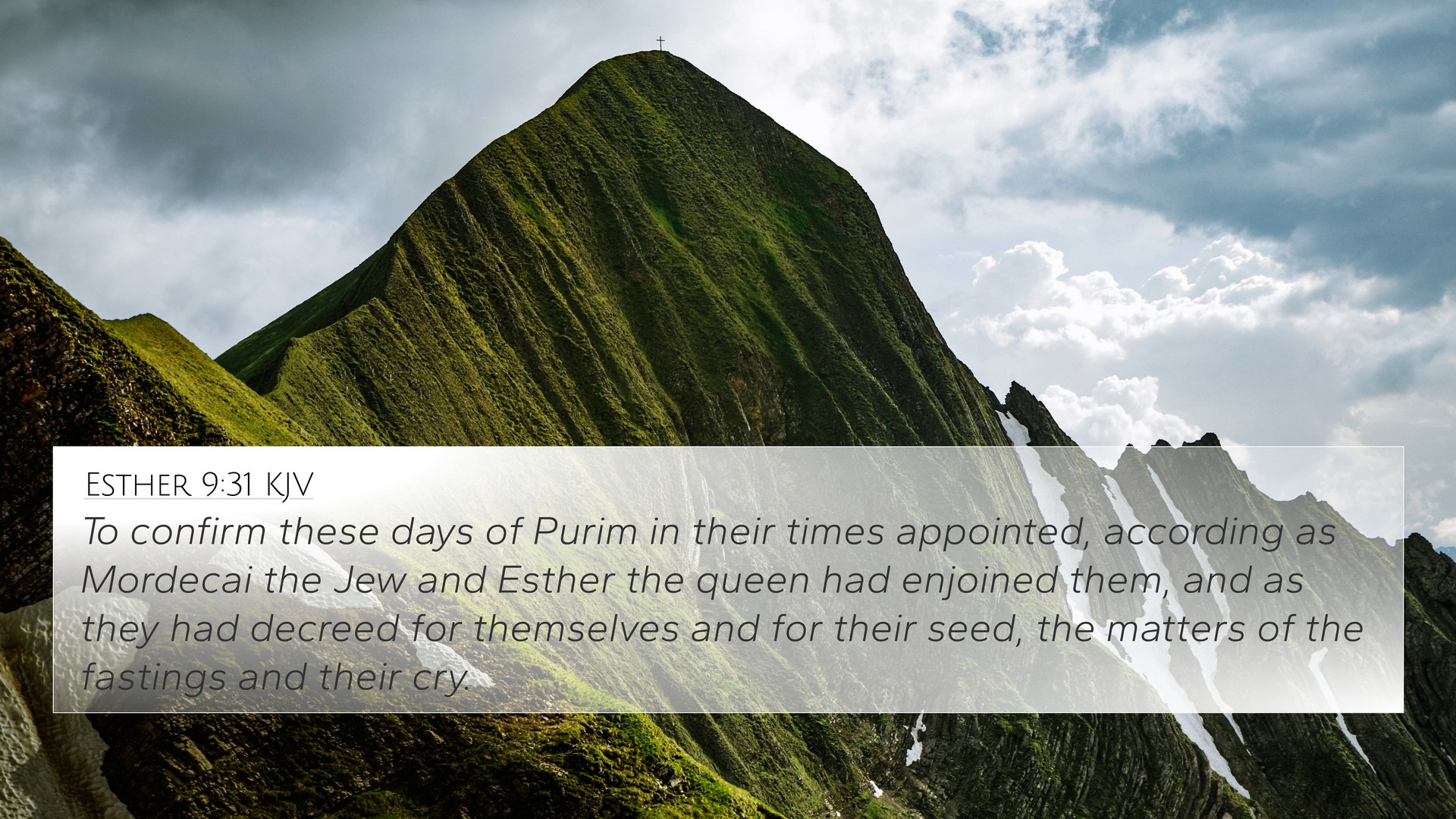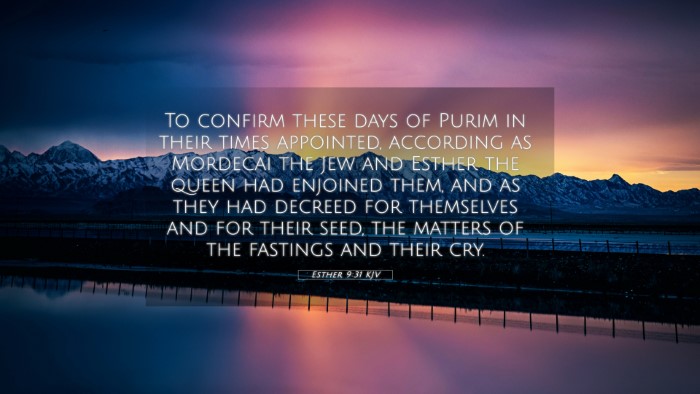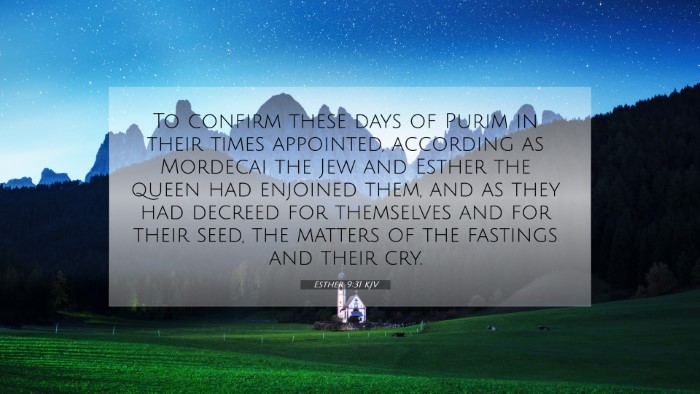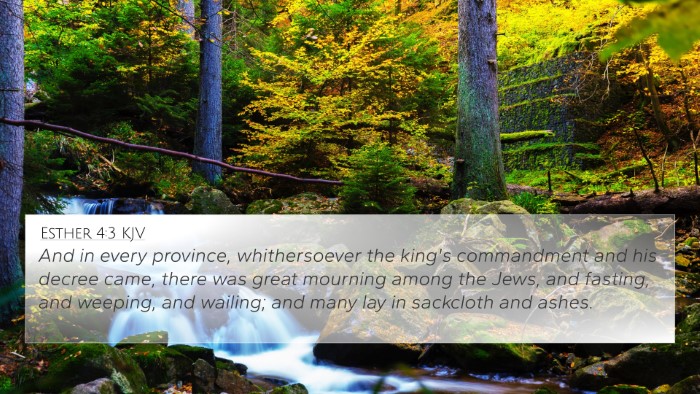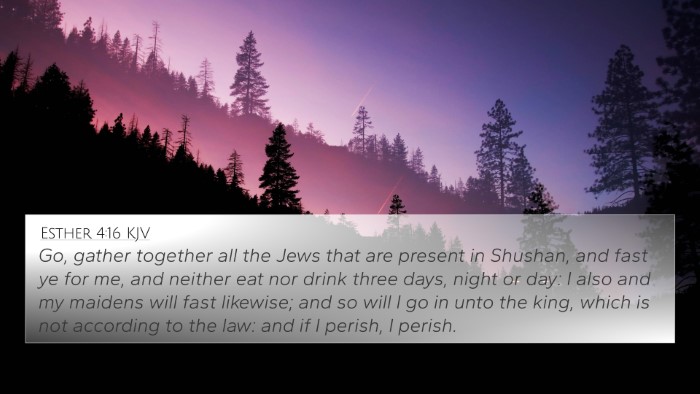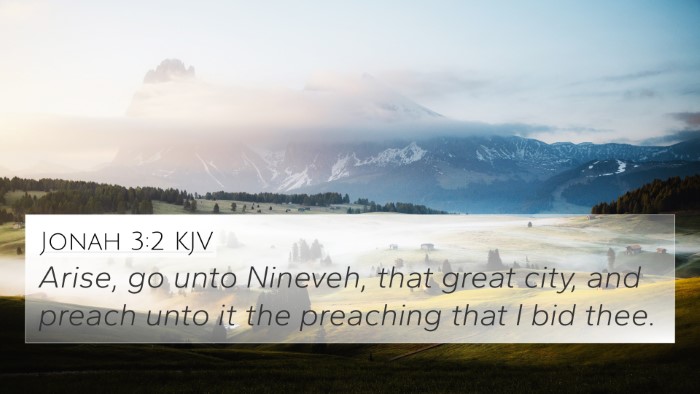Understanding Esther 9:31
Esther 9:31 states, "To confirm these days of Purim in their times appointed, according as Mordecai the Jew and Esther the queen had enjoined them, and as they had decreed for themselves and for their seed, the matters of the fastings and their cry." This verse encapsulates the establishment of the feast of Purim and the observance that followed the deliverance of the Jews from destruction.
Contextual Analysis
The book of Esther is unique in the Old Testament, primarily because it does not mention God directly. However, God's providence and sovereignty are woven throughout the narrative. This establishes a critical theme: that even in apparent absence, God is actively working through human actions to bring about His will.
Commentary Insights
- Matthew Henry: Henry emphasizes the importance of remembrance. He notes that the Jews' remembrance of their deliverance is vital for their identity and faith. The observance of Purim serves to remind them of God's deliverance and should not be forgotten across generations.
- Albert Barnes: Barnes focuses on the significance of establishing a festival as a form of thanksgiving and communal recognition. He points out that while personal deliverance occurs, the corporate aspect is equally important for reinforcing community ties among the Jewish people.
- Adam Clarke: Clarke interprets the verse in the context of the prescribed observance of fasts and feasts in Jewish culture. He highlights how these rituals serve as a means to connect with the past and ensure future generations understand their history and faith.
Thematic Connections
Esther 9:31 is fundamentally about remembrance, community, and continuity of faith. It touches on various themes relevant in broader biblical contexts:
- Deliverance and Redemption: The Jews' escape from annihilation can be paralleled with themes of deliverance found in the Passover narrative (Exodus 12:17, 14:14).
- Community Worship: The communal celebratory aspects of Purim resonate with gatherings in worship, as seen in Leviticus 23:2-4, which outlines sacred feasts.
- Generational Faith: The concept of passing down rituals can be compared to Deuteronomy 6:7, which encourages teaching children about God's commandments.
- Fasting and Prayer: The mention of "fastings" implies a spiritual background that relates to other instances in the Bible where fasting precedes crucial events (Isaiah 58:6, Ezra 8:21).
- Divine Providence: God's unseen hand in human affairs, as illustrated in Esther, aligns with the overarching narrative of God's sovereignty, as found in Proverbs 21:1.
- Celebration as Worship: The act of celebrating deliverance reflects Psalms' themes of praise and thanks (Psalm 107:2, Psalm 30:11-12).
- Covenant Remembrance: The commitment to remember God's acts can also be likened to the remembrance of Christ’s sacrifice in communion, as seen in Luke 22:19.
Cross-References
This verse can be cross-referenced with several key scriptures that enhance its understanding:
- Exodus 12:14: The Passover, representing deliverance and remembrance.
- Esther 9:26: The approval of the writing of Mordecai regarding the Jewish feast.
- Deuteronomy 16:14-15: Celebrating festivals in acknowledgment of God's goodness.
- Isaiah 51:11: The redeemed of the Lord shall return and sing for joy.
- Psalm 22:27: All the ends of the earth shall remember and turn to the Lord.
- Zechariah 8:19: Fasting turned to joy and gladness.
- Matthew 26:29: Jesus' sharing of wine during Passover, reflecting on remembrance.
Connecting Themes Across the Bible
The connections between Esther 9:31 and other biblical texts reveal a deeper understanding of God’s redemptive work. This can serve as a guide for individuals studying the Bible and seeking thematic and relational connections:
- The observance of feasts is deeply woven into Jewish identity and serves as a backdrop for Christian observances.
- Individual experiences of deliverance often resonate with communal faith experiences, encouraging believers to remember their shared narratives.
- A focus on fasting and prayer can lead to profound spiritual insights necessary for understanding divine interventions.
Applications for Cross-Referencing Techniques
If you aim to deepen your study of the Bible and explore cross-references effectively, consider the following tools:
- Bible Concordance: Use a concordance to find keywords and related verses systematically.
- Bible Cross-Reference Guides: Guides that link verses based on themes, ideas, or events can simplify your search for relationships.
- Study Bibles: Many study Bibles include cross-references and notes that provide insights into related scriptures.
- Online Databases: Digital resources allow for quick searches and cross-referencing capabilities.
- Group Study: Engage in group studies to discuss thematic connections and insights gleaned from different perspectives.
Conclusion
Esther 9:31 is not just a historical recollection but a powerful reminder of God’s enduring faithfulness and the importance of community and remembrance. Through cross-referencing and thematic study, believers can uncover deeper spiritual truths and connections that enhance their understanding of Scripture.
